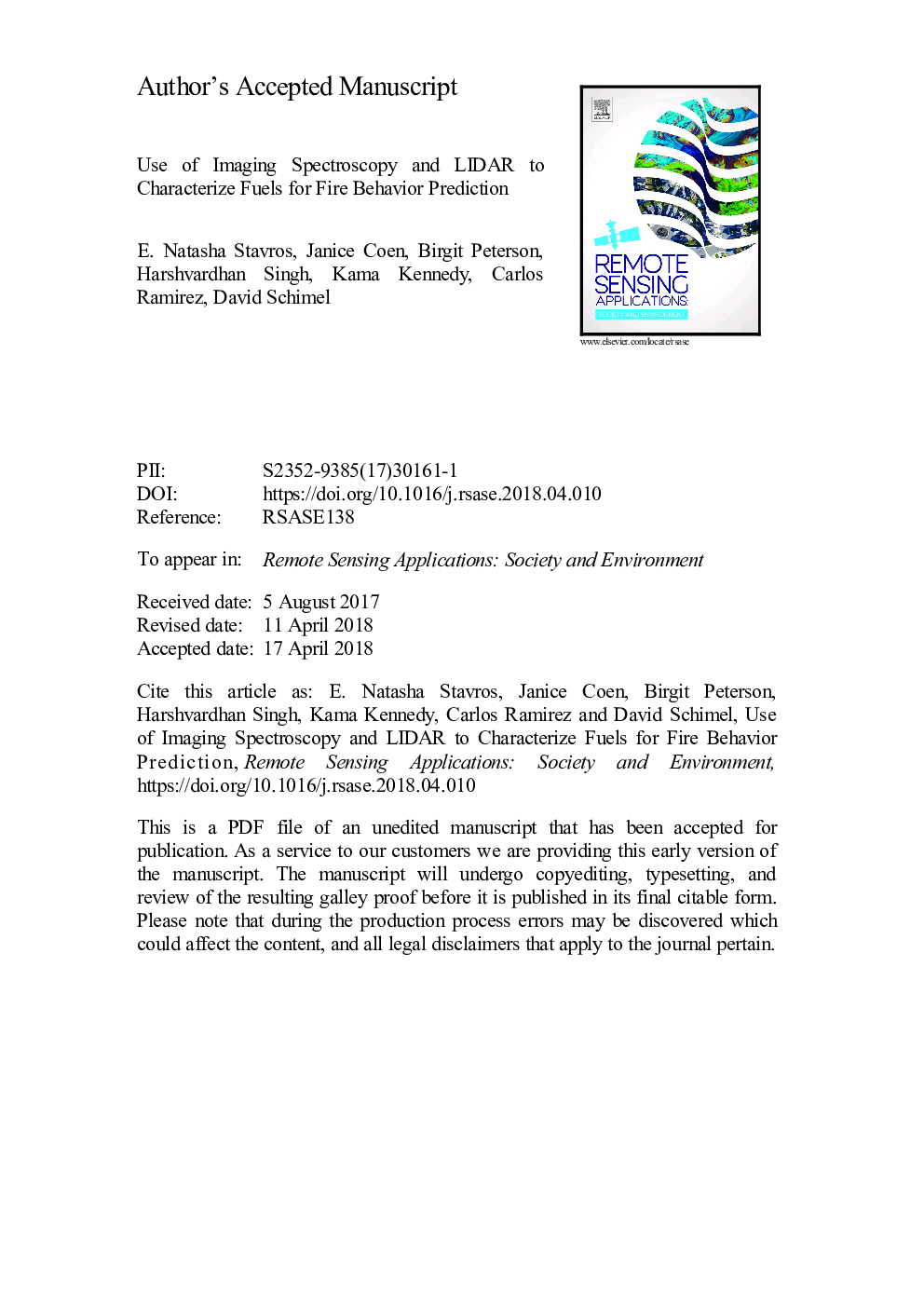| کد مقاله | کد نشریه | سال انتشار | مقاله انگلیسی | نسخه تمام متن |
|---|---|---|---|---|
| 8866292 | 1620996 | 2018 | 24 صفحه PDF | دانلود رایگان |
عنوان انگلیسی مقاله ISI
Use of imaging spectroscopy and LIDAR to characterize fuels for fire behavior prediction
دانلود مقاله + سفارش ترجمه
دانلود مقاله ISI انگلیسی
رایگان برای ایرانیان
کلمات کلیدی
موضوعات مرتبط
مهندسی و علوم پایه
علوم زمین و سیارات
کامپیوتر در علوم زمین
پیش نمایش صفحه اول مقاله

چکیده انگلیسی
To protect ecosystem services and the increasing wildland urban interface in a world with fire, comprehensive maps of wildland fuels are needed to predict fire behavior and effects. Traditionally, fuels have been categorized into a classification scheme whereby a single metric represents vegetation composition and structure, which can then be parameterized based on variable vegetation amount and condition. Remote sensing has been used to extrapolate between known field plots across the landscape, however until recently, those technologies have had limited ability to characterize fuels (e.g., composition, horizontal and vertical connectivity). Using new technologies (imaging spectroscopy and LIDAR), the objectives of this study are to assess: 1) how fuel characteristics observed from remote sensing affect categorical fuel classifications, and 2) how fuel characteristics affect landscape-scale fire behavior (spread rate, areal extent and perimeter). The analysis was conducted over the 2014 California King Fire that burned ~40,000â¯ha over lands with varying use and history and has unique remote sensing observations from before and after the fire. This analysis compares fuel classifications from a synergistic field, model, and Landsat approach (LANDFIRE) and products derived from the Airborne Visible/Infrared Imaging Spectrometer and LIDAR (MapFUELS). Each classification focuses on different fuel characteristics, which were then used to compare differences in a fire simulation model (CAWFE) and actual fire behavior. The results show that fuel characteristic inputs such as horizontal connectivity or fuel type and vertical structure affect fire spread rate and final fire extent (respectively). These results present the opportunity for future integration of fuel characteristics observed at coarser resolutions (900â¯m2) into predictions of fire behavior a similar spatial resolutions (as opposed to the current standard based on empirical relationships between fuel and fire behavior at ~12â¯m2 resolution).
ناشر
Database: Elsevier - ScienceDirect (ساینس دایرکت)
Journal: Remote Sensing Applications: Society and Environment - Volume 11, August 2018, Pages 41-50
Journal: Remote Sensing Applications: Society and Environment - Volume 11, August 2018, Pages 41-50
نویسندگان
E. Natasha Stavros, Janice Coen, Birgit Peterson, Harshvardhan Singh, Kama Kennedy, Carlos Ramirez, David Schimel,